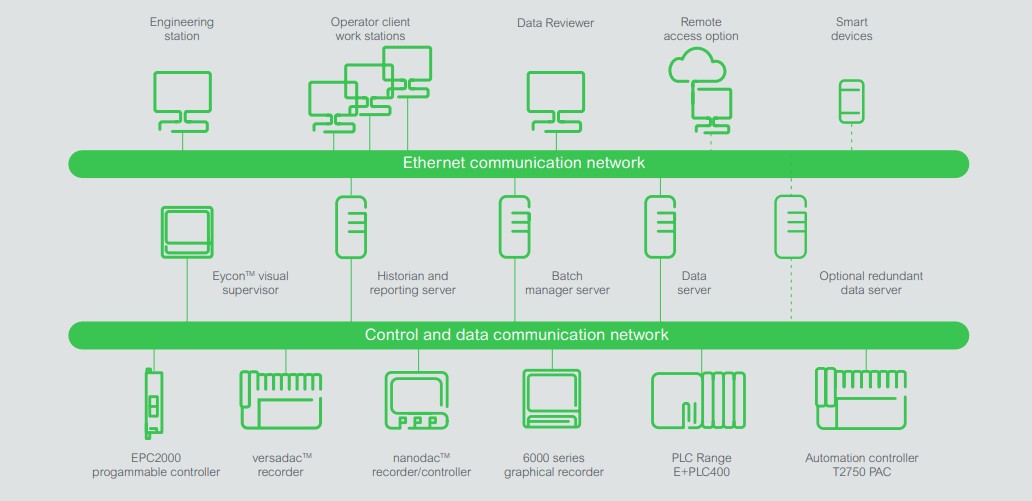Need help choosing the right product?
Our tool will match the best product to your needs
Launch product selectorWelcome to the USA Website
We have detected that you may prefer the Global site. Please use the language dropdown above to change your selection if required.
Sterilization is the act or process, physical or chemical, that destroys or eliminates all viable microbes including resistant bacterial spores from a fluid or a solid. Despite being stated as an absolute, the action of sterilization is usually stated in terms of probability of survival of a known quantity of a specific microorganism (F₀). There are many sterilization methods: chemical, dry heat, filtration, gas, steam, radiation, and vapor
Steam heating: High-temperature moist steam is the most widely used and dependable sterilization process as it is relatively economical, nontoxic, fast acting on microorganisms, and offers adequate penetration. On certain materials there can be some downsides, including corrosion and overheating.
Dry heating: Used where the material could be damaged by high temperature or impenetrable by moist steam (e.g. powders, petroleum products, and sharp instruments). Dry heat is nontoxic, low cost, penetrates materials and is noncorrosive for metal and sharp instruments. Penetration and microbicidal action is generally slower than steam. Some machines are equipped with forced-air or mechanical convection systems that circulate air at a higher velocity and can reduce process time.
Sterilization with gas is subject to risks of explosion and issues with gas toxicity. Common types are shown below:

The process is well understood and the attainment of sterilization conditions can normally be confirmed by simple physical measurements.
Sterilizers using high-temperature steam to process porous loads have a preferred sterilization temperature of 134°C. Aqueous “fluids sterilizers” operate at a preferred sterilization temperature of 121°C. Fluids sterilization is based on the definition of “probability of a non-sterile unit” (PNSU).
Dry-heat sterilizers are essentially electrical ovens. They operate around the sterilization temperature of 160°C.
A filter and fan are used to maintain the chamber slightly above atmospheric pressure to ensure that the sterility of the product and the integrity of the cleanroom environment are not compromised.
Typical steps are: heat, sterilize, and cool.
As an automation and information technology leader our solutions meet the Electronic Record and Electronic Signature requirements as defined by the US and EU regulatory bodies.
The official release is less prescriptive than the preliminary proposal.
The initial version indicated a more robust and easier way to guarantee the effectiveness of the sterilization cycle through the complete separation of control and monitoring.
The latest released requirement does not prevent to combine control and monitoring, provided that ‘safeguards’ are demonstrated. Still, the example in brackets seems to refer to the preliminary draft suggesting the use of ‘duplex/double probes connected to independent control and monitoring systems.’
Eurotherm subject matter experts suggest to keep control and monitoring separated. This approach could allow avoiding GMP qualification (GAMP Cat 4 or 5) for the control component, being that resolved by the monitoring (GAMP Cat 3) element. This method is similar to that advised by ISPE guidance when it suggests considering the segregation of building management systems (BMS) and environmental monitoring systems (EMS).
Choosing a redundant monitoring solution (e.g. T2750 PAC) equipped with serial communication for data transfer from monitoring to control, can reduce the need for sensor duplication thus lowering costs for calibration and reducing errors and alarm occurrences.
To make sound decisions, you need to trust your data. Key regulatory bodies (FDA, EMA, WHO) and some advisory bodies (PIC/S, ISPE) have agreed on the Data Integrity related ALCOA+ concept. ALCOA+ defines that data should be Attributable, Legible, Contemporaneous, Original, and Accurate + Complete, Consistent, Enduring, and Available. As an experienced solution supplier, well established in life science processes, Eurotherm is a main supporter of that vision and contributed to the definition and the revision of some of these guidelines.

Business investments should be future-proof and audits hassle free. Eurotherm has developed and widely applied a set of good engineering practice (GEP) qualification documents based on ISPE GAMP 5 guidelines to assist with achieving these goals. Qualification documents can be maintained in electronic format. Industry is progressing from manual standard operating procedure (SOP) based manufacturing operations to a digitalized paperless quality systems approach based on FDA and ICH guidelines.
In a quality by design (QbD) approach, product quality is continuously monitored and controlled at the earliest stages, rather than waiting for a process to end. Pharmaceutical manufacturers need to focus on identifying, controlling, and validating process variables that could cause a non-compliant result. This is accomplished by managing the quality target product profile (QTPP), the critical quality attributes (CQA), and the critical process parameters (CPP). As defined by the process analytical technology (PAT) approach, Eurotherm can assist with measurement and performance analytics on CQAs and help manage CPP deviations, providing time-stamped evidence for correlation of parameter behaviors at their occurrence.
Eurotherm control and data recording solutions are EcoStruxure-ready, providing a Data Integrity layer within the Schneider Electric EcoStruxureTM platform. EcoStruxure is Schneider’s open IoT-enabled system architecture aiding the digital transformation to Pharma 4.0 technology.
Product Selector
Our tool will match the best product to your needs
Launch product selectorContact Us